Curcuma zedoaria / A buried treasure in my garden [ENG/SPA]
Hello nature lovers, today I want to share a wonderful plant in my garden that is a treasure for its exotic appearance and its multiple uses and importance for the pharmaceutical and food industry.
Hola amantes de la naturaleza, el día de hoy quiero compartirles una maravillosa planta que está en mi jardín que es todo un tesoro por su exótica apariencia y por sus múltiples usos e importancia para la industria farmacéutica y alimentaria.
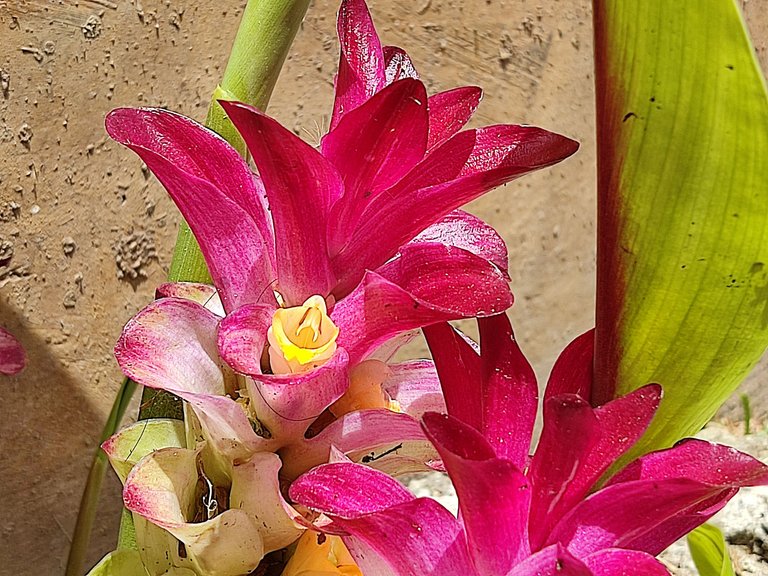
With the onset of the rains, many plants have bloomed in the garden, and Curcuma zedoaria was no exception.
Con el inicio de las lluvias muchas plantas han florecido en el jardín y la Curcuma zedoaria no fue la excepción.
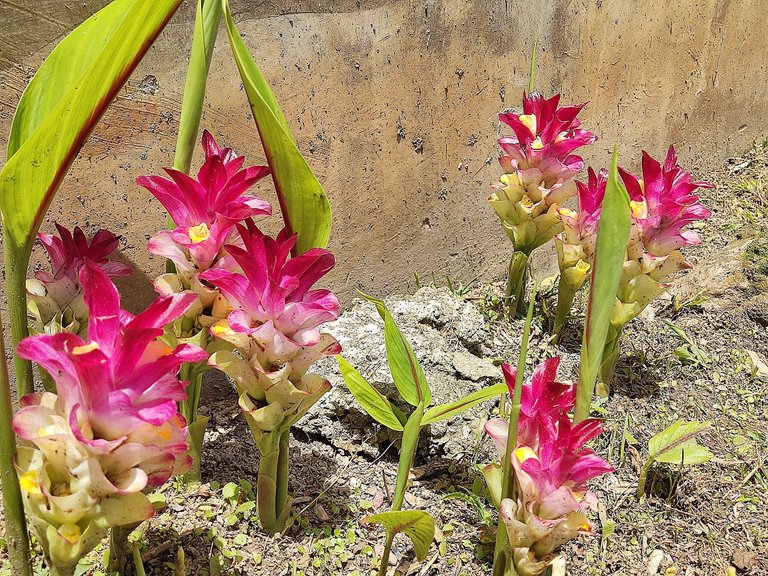
It is a plant that needs constant rainfall and well-drained soil to develop properly. Another fundamental factor is the temperature. It is ideal to cultivate it in environments ranging between 20 to 30ºC.
Esta es una planta que necesita de constantes lluvias y un suelo con buen drenaje para desarrollarse adecuadamente. Otro factor fundamental es la temperatura, por eso es ideal cultivarla en ambientes que oscilen entre los 20 a 30ºC.
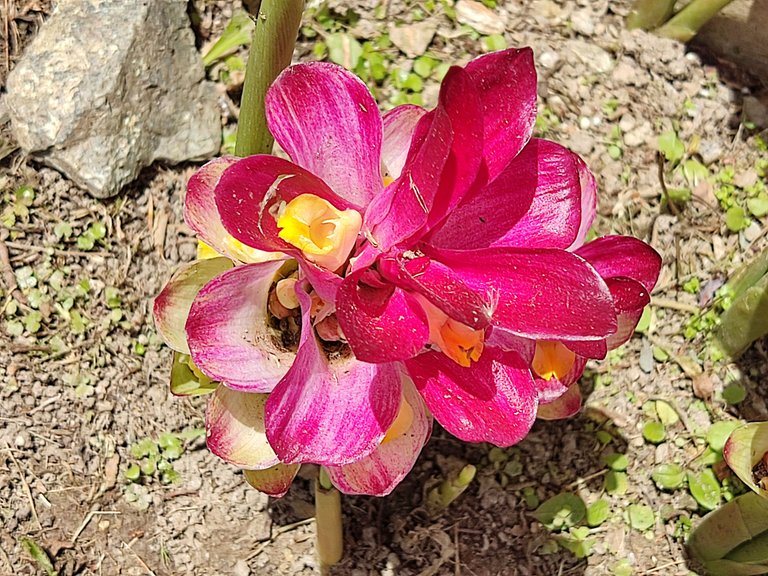
Curcuma zedoaria is a plant native to Southeast Asia (India, Bangladesh, Philippines, Indonesia, Thailand, Vietnam, Burma, Cambodia, Malaysia, and Singapore) and belongs to the Zingiberaceae family, the same family to which ginger and cardamom belong.
There are more than 80 plants belonging to the taxonomic genus Curcuma. Here we find Curcuma longa, which is the best known for the use of its rhizome as a spice and colorant. However, we should not confuse Curcuma zedoaria with Curcuma longa, because each of them has a very particular use. Anyway, I will explain it in detail later on.
La Curcuma zedoaria es una planta originaria del Sudeste Asiático (India, Bangladesh, Filipinas, Indonesia, Tailandia, Vietnam, Birmania, Camboya, Malasia, Singapur) y pertenece a la familia Zingiberaceae, la misma familia a la que pertenecen el jengibre y el cardamomo.
Existen más de 80 plantas que pertenecen al género taxonómico Curcuma. Aquí se encuentra la Curcuma longa que es la que más conocida por el uso de su rizoma como especia y colorante. Sin embargo no debemos confundir la Curcuma zedoaria con la Curcuma longa, porque tienen uso muy particular cada una de ellas. De todos modos más adelante lo explicaré en detalle.
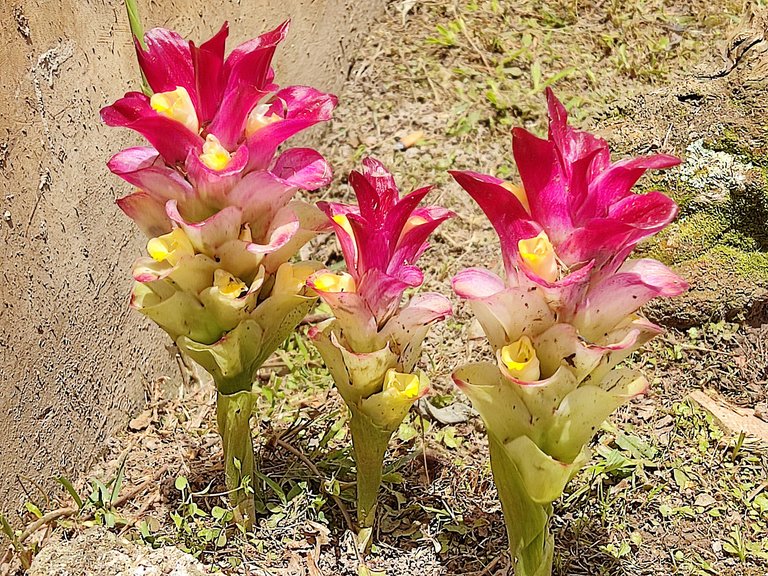
It is a very curious plant because first grows the flower spike (formed by white and fuchsia bracts) and then the foliage (green leaves).
Esta es una planta muy curiosa ya que primero crece la espiga floral (formada por brácteas blancas y fucsias) y luego el follaje (hojas verdes).
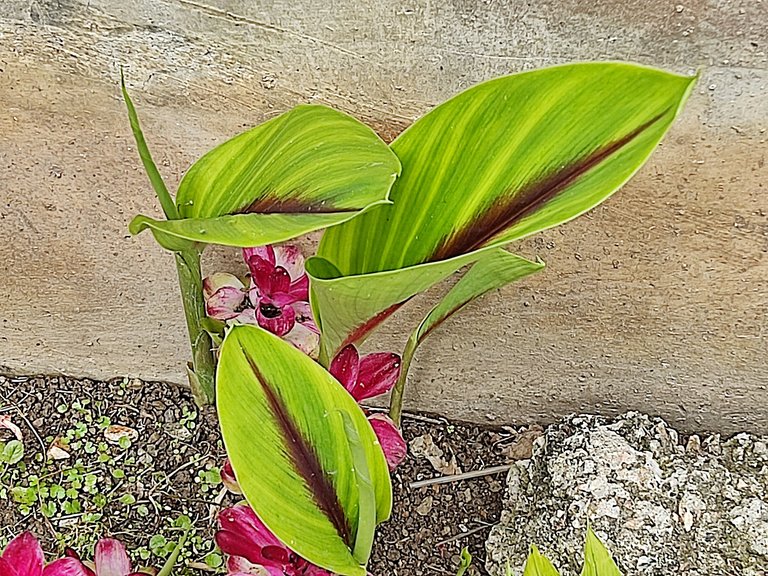

Its bracts have a firm structure, and each one of them has a funnel shape, which gives this plant a peculiar appearance.
Sus brácteas son de una estructura firme y cada una de ellas presenta una forma de embudo lo que le da una apariencia peculiar a esta planta.

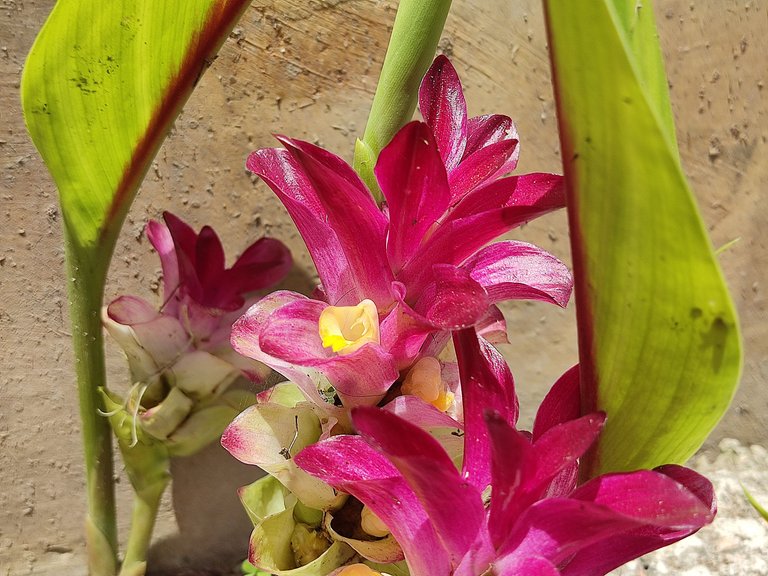
We often confuse these striking fuchsia structures with the flowers of the plant, but if you look carefully, the flowers are the small white structures with yellow tips.
Muchas veces solemos confundir estas llamativas estructuras fucsias con las flores de la planta, pero si observas con cuidado las flores son las estructuras pequeñas de color blanco con la punta de color amarillo.
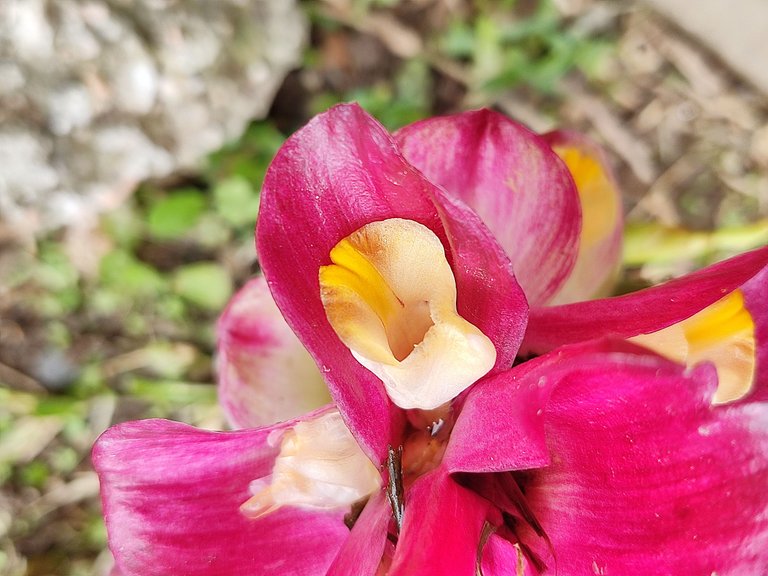
The flowers of this plant are composed of three white petals of thinner tissue concerning the bracts.
Las flores de esta planta están compuestas por tres pétalos blancos de tejido más fino con respecto a las brácteas.
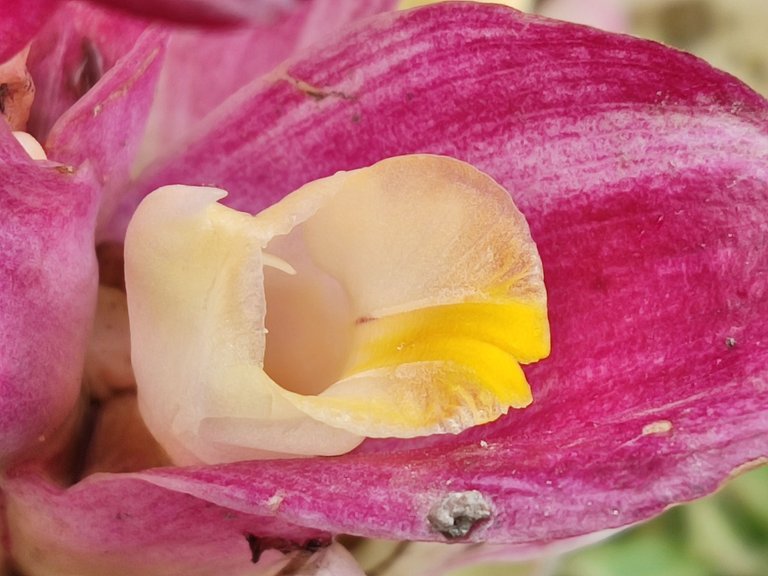
Like orchid flowers, the flowers of Curcuma zedoaria's third petal form a bulging structure called a labellum that is bright yellow.
Al igual que las flores de las orquídeas, las flores de la Curcuma zedoaria su tercer pétalo forma una estructura abultada llamada labelo que es de color amarillo intenso.
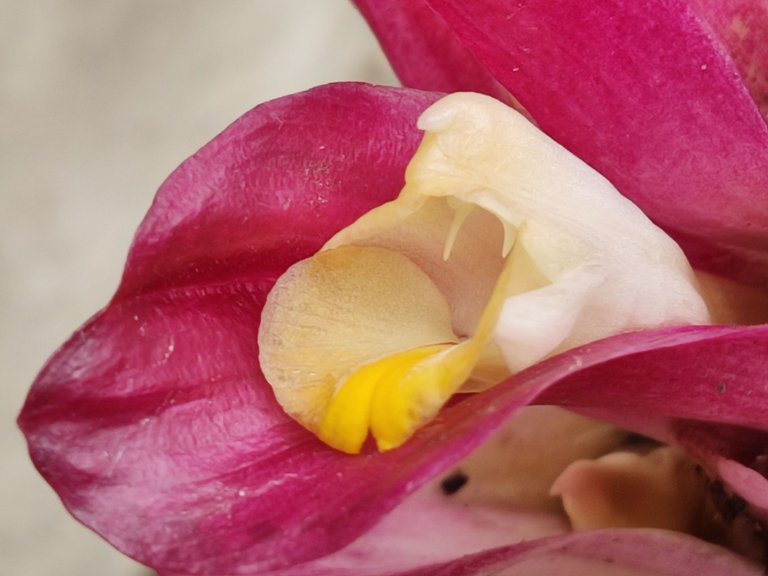
When photographing the flower more closely, the inner part of its petals adopts a toothed shape.
Al fotografiar más de cerca la flor se pueden observar que la parte interna sus pétalos adoptan una forma de dientes.
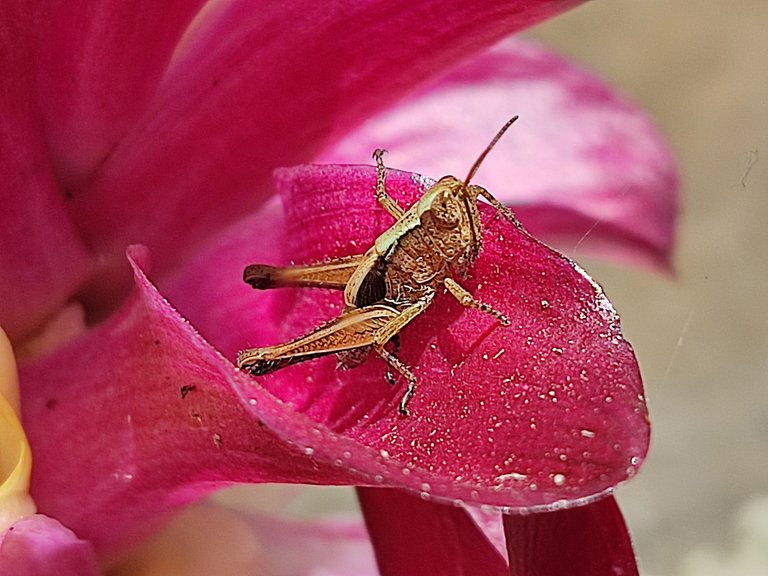
The color of this plant is so striking that insects cannot resist landing on it. It is a mechanism to easily attract pollinators.
El color de esta planta es tan llamativo que los insectos no se pueden resistir a posarse sobre ella. Este es un mecanismo para atraer con facilidad a los polinizadores.
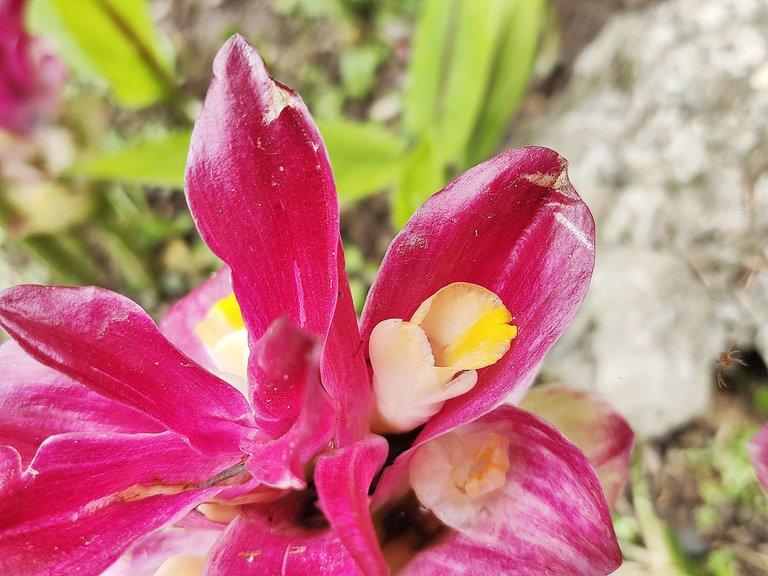
It is a highly prized plant not only for its ornamental function. In traditional Asian medicine, it has several uses since all parts of the plant have bioactive substances that current science has certified its efficacy in human health (hypolipemienate, antihypertensive, carminative). This plant has cytotoxic substances for cancer cells, antifungal, antibacterial. However, the most valuable part of the plant is buried under the ground.
Esta es una planta muy preciada no solo por su función ornamental. En la medicina tradicional asiática tiene varios usos ya que todas las partes de la plantas tienen sustancias bioactivas que la ciencia actual ha certificado su eficacia en la salud humana (hipolipemienate, antihipertensiva, carminativa). Esta planta tiene sustancias citotóxicas para células cancerígenas, antifúngicas, antibacterianas. No obstante la parte más valiosa de la planta está enterrada bajo el suelo.
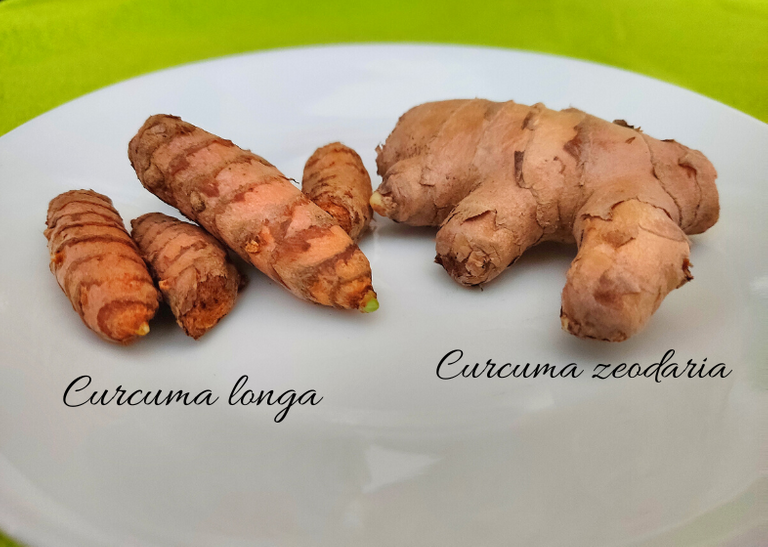
The rhizome of the plants of the taxonomic genus Curcuma is the most abundant part of bioactive substances. As I mentioned in previous paragraphs, we cannot confuse Curcuma longa with zedoaria since Curcuma longa is rich in curcumin, an orange pigment that makes it preferred for use in gastronomy, either fresh or in powdered form.
El rizoma de las plantas del género taxonómico Curcuma es la parte más abundante en sustancias bioactivas. Como mencioné en párrafos anteriores, no podemos confundir la Curcuma longa con la zedoaria ya que la Curcuma longa es rica en curcumina, un pigmento naranja que la hace preferida para usar en la gastronomía ya sea fresca o en polvo.
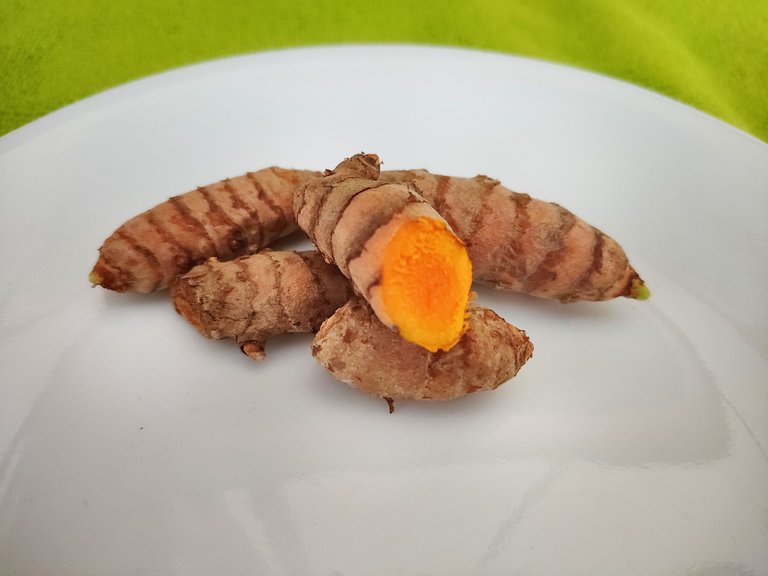
Curcuma zedoaria, on the other hand, has a lower concentration of curcumin, which is why its rhizome is white or beige. However, it is rich in curcuminol, an essential oil that gives this rhizome a spicy, bitter, and minty flavor similar to its cousin ginger. It is not for nothing that the rhizome of Curcuma zedoaria is used in Thailand, India, and Indonesia as a spice in salads, stir-fries, and curries.
En cambio la Curcuma zedoaria posee menos concentración de curcumina por eso su rizoma es blanco o beige. Sin embargo es rica en curcuminol, un aceite esencial que le dá a este rizoma un sabor picoso, amargo y mentolado similar a su primo el jengibre. No en vano el rizoma de la Curcuma zedoaria es usada en Tailandia, India e Indonesia como especia en ensaladas, salteados y curris.
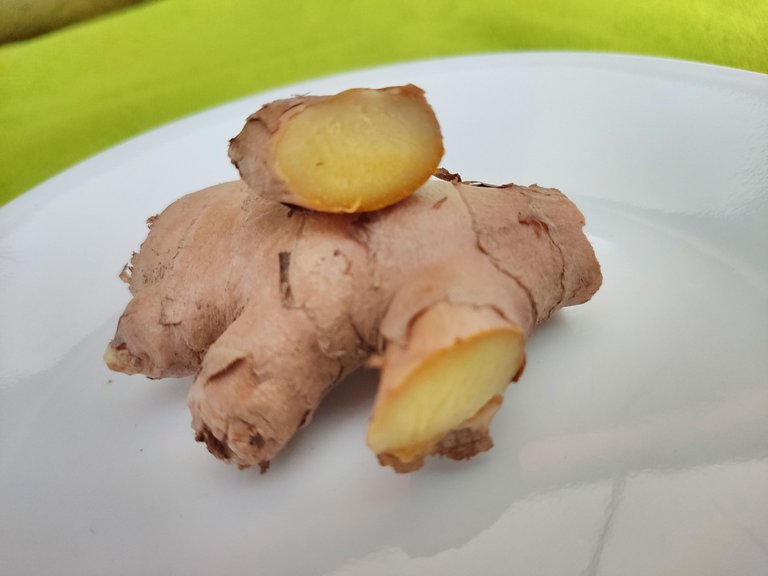
The importance of the high concentrations of curcuminol in the rhizome of this plant is because it can become an important source for extracting this essential oil with analgesic properties. Today there are capsules of this compound sold in health food stores.
La importancia de las altas concentraciones de curcuminol en el rizoma de esta planta es porque puede convertirse en una fuente importante para extraer este aceite esencial con propiedades analgésicas. Hoy en día hay cápsulas de este compuesto que se venden en las tiendas naturistas.

The commercial potential of this plant is still in its infancy since many studies consider it as a source to produce food films that protect food against oxidation, as well as the analgesic properties that the pharmaceutical industry wants to take full advantage of and not to mention the use of this plant to extract substances that protect the gastrointestinal system of livestock against pathogenic bacteria. So do not forget this plant, take a good look at it because in the next 5 years it will be in the top ten of superfoods.
If you want to learn more about this fascinating plant, I leave you the following link of interest:
Las potencialidades comerciales de esta planta aún están en sus inicios ya que son muchos los estudios que la consideran una fuente para producir películas alimentarias que protejan a los alimentos contra la oxidación, al igual que las propiedades analgésicas que la industria farmaceútica desea aprovechar al máximo y ni que hablar del uso de esta planta para extraer sustancias que protegen el sistema gastrointestinal del ganado contra bacterias patógenas. Por eso no olvides esta planta, mírala bien porque en los próximos 5 años estará en los top ten de los super alimentos.
Si deseas profundizar sobre esta fascinante planta te dejo el siguiente enlace de interés:

All images are property of the author
Gracias por leerme. ¡Nos vemos en una próxima publicación!
Todas las imágenes son propiedad de la autora


https://twitter.com/chaodietas/status/1536455563764195329
The rewards earned on this comment will go directly to the people(@chaodietas) sharing the post on Twitter as long as they are registered with @poshtoken. Sign up at https://hiveposh.com.